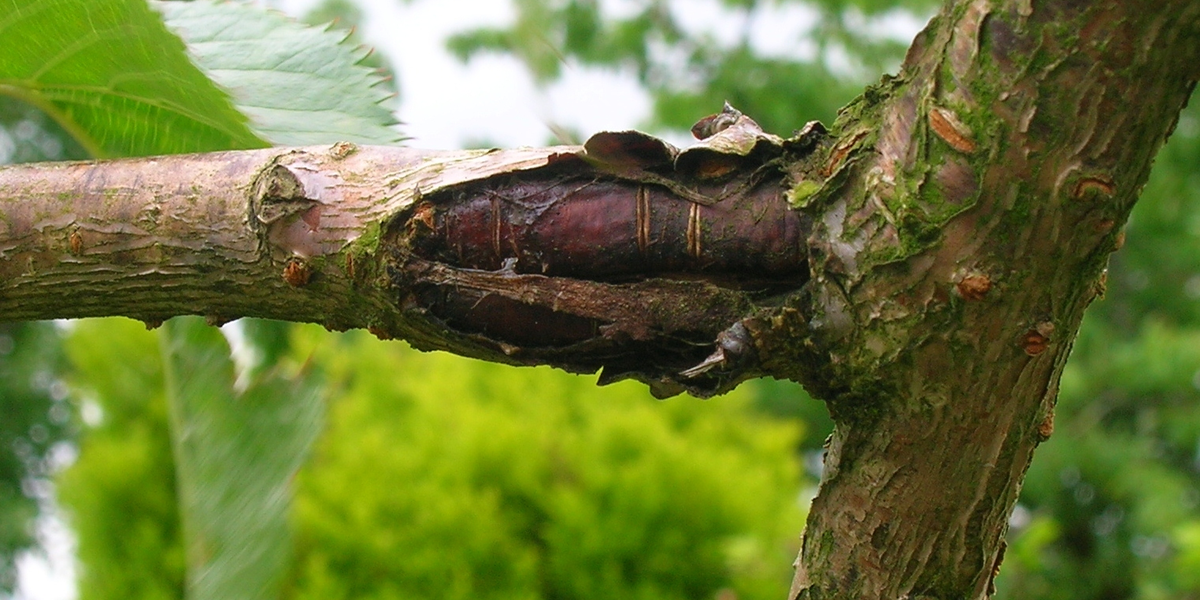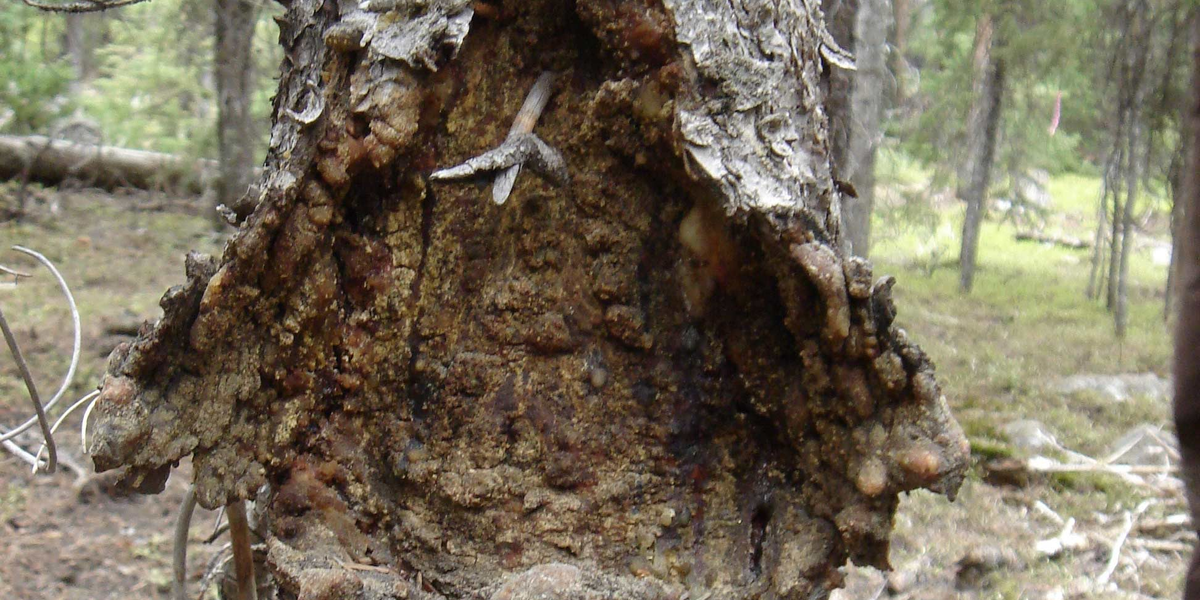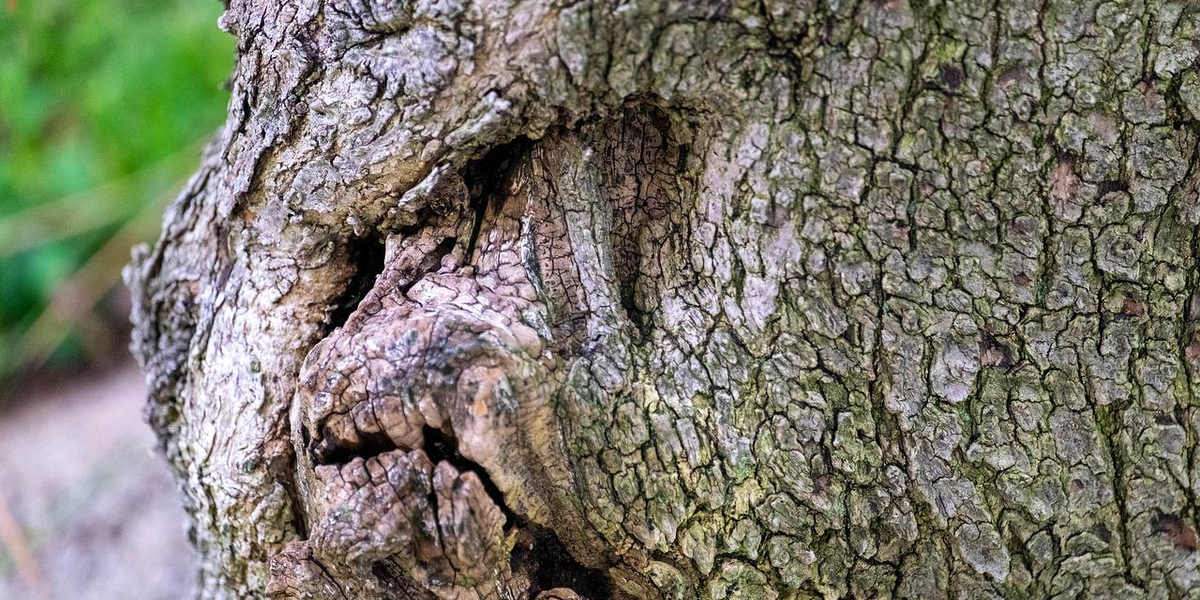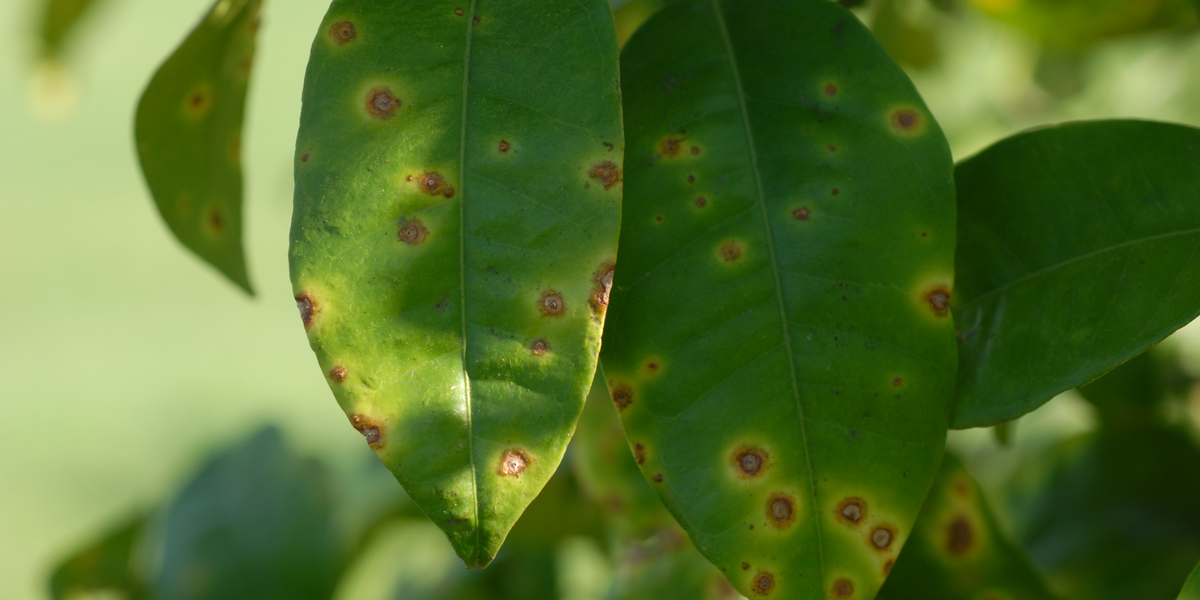Canker plant disease is more common than you think. It frequently happens in the kingdom of shrubs and trees. Although houseplants are less vulnerable to the disease, there is no 100 percent guarantee they’re safe from it. Canker is not the illness in the usual meaning. It is rather a symptom of the injury left with the infection inside. This “symptom” can ruin the plant in no time or destroy the tree.
Detailed Guide to Canker
Canker is the disease of a wide range of plants provoked by bacteria or fungi, based on the type. This illness is mostly spread on trees and different woody species but can be found in houseplants as well. Canker kills the foliage by getting into the branch or twig. Their main targets are plants that were already weakened by insects and their bites, cold, root rot, drought, nematodes, or imbalance in nutrition.
Bacterial canker
This disease is widely spread in the US. It is popular in plums, cherries, and apricots. It infects mainly the fruit trees. Bacterial canker in plants is noticeable by the sunken lesions form on the twigs and trunk. The wounded areas can also provide the smell you will notice in no time. After the spring is gone, the canker gets darker and more visible. No matter how dark the bark is, the infected part will be even darker. The tissue under it is also dark, black, or brown. If you touch it, it will be moist.

The bacterium that provokes canker on the plants is the Pseudomonas syringe. This bacterium usually appears inside the injuries that are already on the plants. Canker does not spread on the totally healthy trees. If the plant survives in the cold with injury, it may get infected too. The most common time for the disease is in the spring when a sudden frost appears. It may appear in the early spring, later fall, or winter, when the weather is wet and cold. The bacterium can be spread to the injured plants via the water, rain, or even by a human who uses the same pruning tools for each plant. This canker plant disease survives the winter in the buds that were infected, on the healthy weeds or trees.
Fungal canker
This type of disease is caused by fungi and appears in the wounded trees and bushes. The major hosts are trees like willows, firs, pines, and oaks. If the tree is suffering from injury, you have to treat it before the fungal illness appears.

Types of Canker
There are different types of the canker plant disease. Some of them are caused by bacteria, others by fungi. Some of them are more dangerous for the plant than others. No matter the type, it is better to provide the treatment right away. To cure the disease, you have to find out which type of canker the plant has. The most popular types:
- Cytospora canker is popular among spruce trees. It can be found on willows, poplars, and pines too. It is common for Colorado blue spruce too. Branches quickly die. You will notice it by the layer of bluish-white hard for the touch resin on the infected areas. The disease is caused by Laucostoma kunzei fungus and may stay in healthy brunches for years;
- Citrus canker usually affects the Citrus family. It is activated by Xanthomonas axonopodis bacterium. An infection affects fruits, leaves, and stems. It causes the loss of leaves and fruits. You may see it on grapefruits, limes, and oranges;
- Botryosphaeria canker is the disease of forest trees, shrubs, and fruit trees like cherries or apples. There are over 20 different genera of the same disease. They are all caused by Botryosphaeria fungi. While the forest trees can be affected too, the most fragile are landscape plants, like dogwood, elm, honeylocust, maple, and hemlock. The type of stem canker is spread on azalea;
- Hypoxylon canker is caused by ascomycete fungus which affects the growth of the tree. The disease spreads on heavily wounded trees and speeds up the dying process. It infects a wide range of trees, including aspen trees, sycamores, and oaks;
- Phomosis canker is widespread among Russian olive, arborvitae, Douglas-fir, and juniper. It is also known as blueberry canker disease. It infects the injured wood from the tips of canes. It grows down to the cane, killing the whole brunch. You will recognize it by the brown pith of the interior of the wood that was cut;
- Phytophthora bleeding canker is common for the horse chestnut trees, caused by infection. Bacteria Pseudomonas syringe quickly spreads on the trunk. The pathogen survives in the soil and can stay there for a year until it finds the perfect host. In October and November, it is getting the most active;
- Seiridium canker or Cypress canker is caused by the fungal pathogen Seiridium. It is spread in West Virginia and affects cypress trees. The disease spreads from brunches and leads to the death of the whole tree;
- Nectria canker is spread on maple, locust, and oak. It is caused by the Nectria fungus that spreads on the plants damaged by the insects, animals, hail, or freezing. You will notice the disease by the sunken areas and damaged tissues;
- Rose canker is caused by Leptosphaeria coniothyrium or Cryptosporella umbrina pathogens. Both fungi can affect injured and already vulnerable stems. This canker acts mostly in the spring and autumn when the plant gets weaker and more fragile. You will notice it by the purple or dark red lesions. In the most severe cases, it can cause the necrosis of the plant and the death;
- Pitch canker is called by Fusarium circinatum pathogen. It is spread on Douglas fir, loblolly pine, slash pine, Mexican weeping pine, and Monterey pine. The fungus can survive winters on healthy or injured trees. It causes the bark canker once it is spread on the branches of the trees.
Symptoms of Canker Disease
If you want to take the proper care of your plant, you have to make sure that you are treating it for the right disease. As you may have noticed already there are numerous types of the same illness that can be spread on trees, bushes, and houseplants. If you want to recognize the disease you have to pay attention to the following symptoms:
- Small brownish spots may appear on the stem. Before that, you may notice a cut or injury on the stem. If you do nothing, it will be turning into a dark spot;
- You will notice the sunken areas on the tree trunk or stem. They will have a different color from the healthy tissue;
- You can notice the unpleasant odor that is coming from these dark spots;
- The plant can look wilted and yellowed when the disease is at the stem’s base;
- The whole stem’s tissue can become mushy and watery;
- The fungus that causes the disease can also spread spores on the trunk or stem;
- The disease can spread on the fruit trees and you will notice that the tree stopped growing, there are no fruits, or brunches fall down;
- Areas that are already affected are discolored, cracked, and swollen;
- Sometimes the leaves are turning brown and wilted. The plant above the ground dies;
- There are completely dead areas on the plant.

Houseplants Infected by Canker
Canker can spread on houseplants as well as on trees or bushes outside. The infection spreads quickly and leads to the death of the flower. You have to make sure that you took the disease under control before it destroys your favorite plant. Here are the most popular targets of canker among the indoor flowers:
- Laceleaf. You will notice tiny dark spots on the leaves in the first place. They will later enlarge and cover the entire leaf before it dies. You can still save the plant by cutting infected areas and replanting them into the new soil. Don’t forget about the fungicide to prevent the further spreading of the illness;
- Orchids. Transmission of the disease starts with the leaves. The ends of the leaves look like they were burnt by the fire. There are brown spots on leaves as well. You have to cut off these leaves until the disease spreads further. The best way to prevent the disease is to use fitosporin m-fungicide on the flower;
- Cacti. If you overwater cacti, it may get the plant canker too. In the classification of plants with canker, this one is the hardest case. It is almost impossible to cure. The disease starts with the below-ground changes. Later the bright borders on the sunken part of the cacti appear. You need to cut the damaged tissue with a sharp knife and use the charcoal as a treatment. Don’t water the plant for a month so the fungus dies.
How to Treat Plant Canker
The best way to deal with canker is to prevent it in the first place. While you can treat numerous types of plant canker, you will have to sacrifice the already infected part of the plant. With knowledge you receive from the article, you can take simple steps to prevent disease without the need to eliminate the canker on the plant.

Preventive measures
Prevention is always the best strategy. While the infection can already be there without you even noticing it, spreading on the seeds, on the plant, and on the tools you use, you still can deal with it. Keep in mind the following simple rules:
- Keep the level of humidity normal. No matter the weather outside, your plants have to grow at a perfect humidity level. This disease can spread in the air. The pathogen prefers high humidity in the house. The most favorite level for canker is 88 percent with a temperature of 73F. Don’t activate the pathogen by providing it with the perfect conditions. You have to make sure that the level of humidity is normal and the air is not stale;
- Don’t overwater the plant. Cacti, for example, get infections from overwatering. Make sure that each plant receives the water enough for life and not more;
- Don’t plant the flower in the soil that was used before. If your previous flower died in the pot, you can’t use the same soil for the new one. It may contain the spores of canker;
- Always disinfect the garden tools you use for your plants. Do it after each plant even if you believe it is healthy. Use the alcohol to disinfect it;
- Use fungicide in preventive measures. You can provide the procedure in the spring and autumn. Make sure that the fungicide you use as preventive measure does not harden the plant.
Canker treatment
Although the disease is complicated to cure, you still can try. There is a different treatment for different types of canker and plants. You may start with the next steps:
- Use the fungicides against the fungal canker. The most effective types of fungicide in the US are Cuproxat and those that contain copper chloride;
- Cut the infected areas. It may sound harsh, but you will not save the branch or leaf that is already rotten or barely holding. Use only the disinfected shears to do it. Don’t forget to clean them after you have cut the diseased place;
- Use the new soil. Once you are done cutting off the infected areas, you have to make sure that the spores with infection are left behind too. You need to replant your flower in the new soil. Prepare it in advance. It must have a normal drainage system, in totally new, or be washed with a bleach pot. You can’t take risks;
- Pick the right time to treat the infected plant. You can’t do it while there is rain outside and the level of humidity is high. It is better to do it when the weather is warm and sunny so your work would not be compromised;
- Throw away the old soil immediately. If you leave it, one day you can accidentally plant a totally healthy flower in it. Spores of canker can survive in the soil for some time. They will be activated once you plant something new in the soil.

Right Time for Canker Identification
The truth is there is no right time to identify the disease if you want to save the whole plant. It means you need to check its condition every time you water your flower. It is better to prevent disease so you wouldn’t have to deal with it. Canker is the infection that spreads on already ill plants. It finds the damaged or injured stem, root, or tree trunk, and spreads the spores inside. This is why you have to make sure that your plant gets the cure before the canker appears. Read this helpful guide and find the best treatment for your plants.
Have you ever met similar symptoms that were described above? Have you dealt with plant canker before? Which of your plants suffered from it? You can share your thoughts about canker disease and the treatment in the comments below.
Leave a Reply
You must be logged in to post a comment.